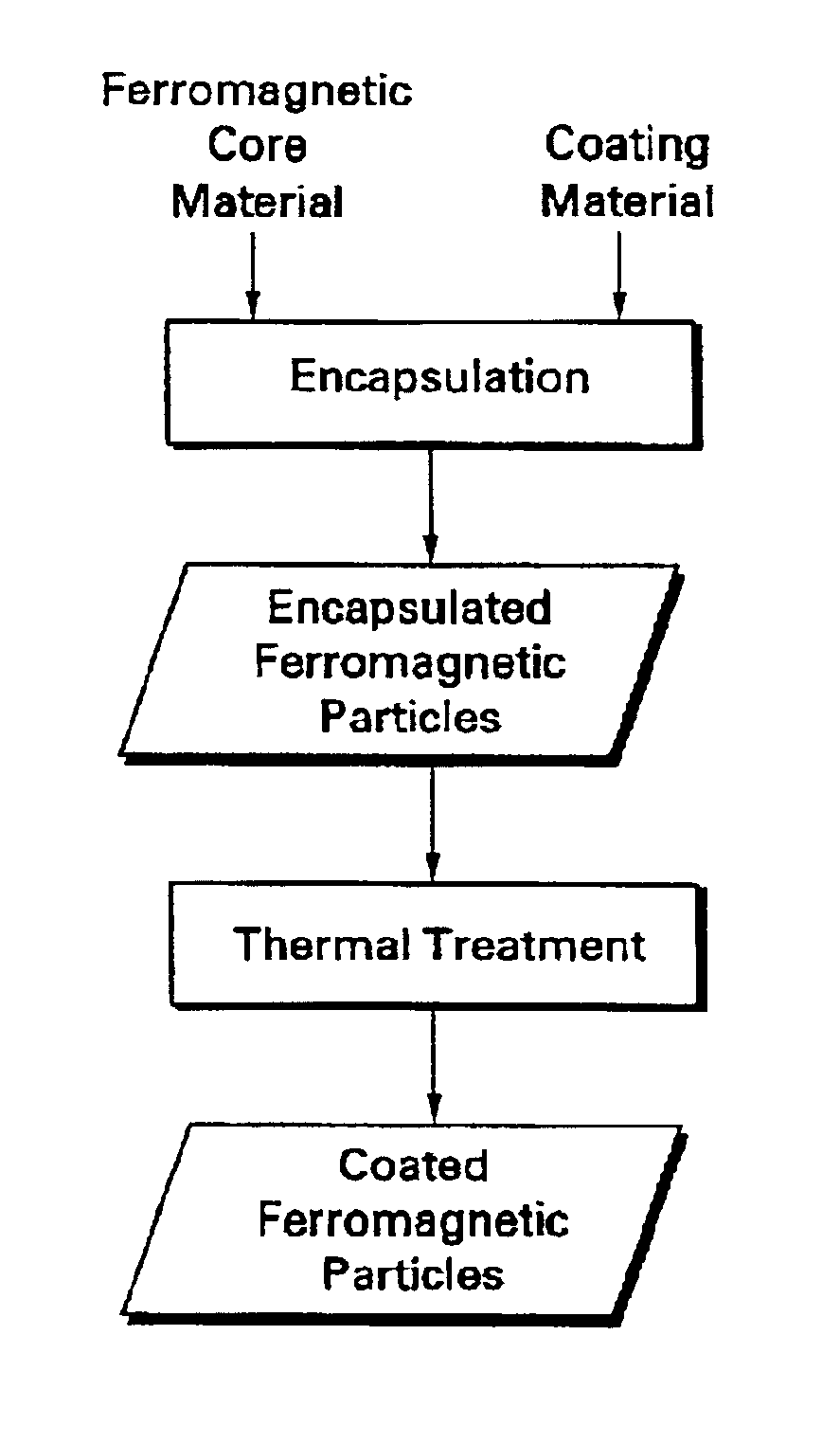Coated ferromagnetic particles and composite magnetic articles thereof
a magnetic article and ferromagnetic particle technology, applied in the field of soft magnetic materials, can solve the problems of energy expenditure, hysteresis loss, energy loss in the magnetic core of the material, etc., and achieve the effect of increasing strength and promoting adhesion
- Summary
- Abstract
- Description
- Claims
- Application Information
AI Technical Summary
Benefits of technology
Problems solved by technology
Method used
Image
Examples
Embodiment Construction
Iron powder (Ancorsteel 1000C) obtained from Hoeganaes Corporation (Cinnaminson, N.J.) was used as the ferromagnetic core material. A silicone (Grade YR 3370), in powder form, obtained from GE Bayer Silicones (Waterford, N.Y.) was used as the coating material. A predetermined amount of silicone was dissolved in xylene, used as a solvent, to form a solution. The weight fraction of the silicone was varied from about 0.125 weight percent to about 2.5 weight percent of a total weight of the silicone and the ferromagnetic core material. A predetermined weight of iron powder was dipped in the solution and the mixture was agitated. A rotavac apparatus (purchased from Heidolph, Germany) with a round bottom flask immersed in a temperature-controlled bath was used. The mixture was contained in the flask and the bath temperature was maintained between about 85.degree. C. to about 95.degree. C. The system was rotated while the content of the flask was subjected to a moderate vacuum of about 17,...
PUM
| Property | Measurement | Unit |
|---|---|---|
| diameter | aaaaa | aaaaa |
| frequency | aaaaa | aaaaa |
| magnetic flux density | aaaaa | aaaaa |
Abstract
Description
Claims
Application Information
 Login to View More
Login to View More - R&D
- Intellectual Property
- Life Sciences
- Materials
- Tech Scout
- Unparalleled Data Quality
- Higher Quality Content
- 60% Fewer Hallucinations
Browse by: Latest US Patents, China's latest patents, Technical Efficacy Thesaurus, Application Domain, Technology Topic, Popular Technical Reports.
© 2025 PatSnap. All rights reserved.Legal|Privacy policy|Modern Slavery Act Transparency Statement|Sitemap|About US| Contact US: help@patsnap.com



